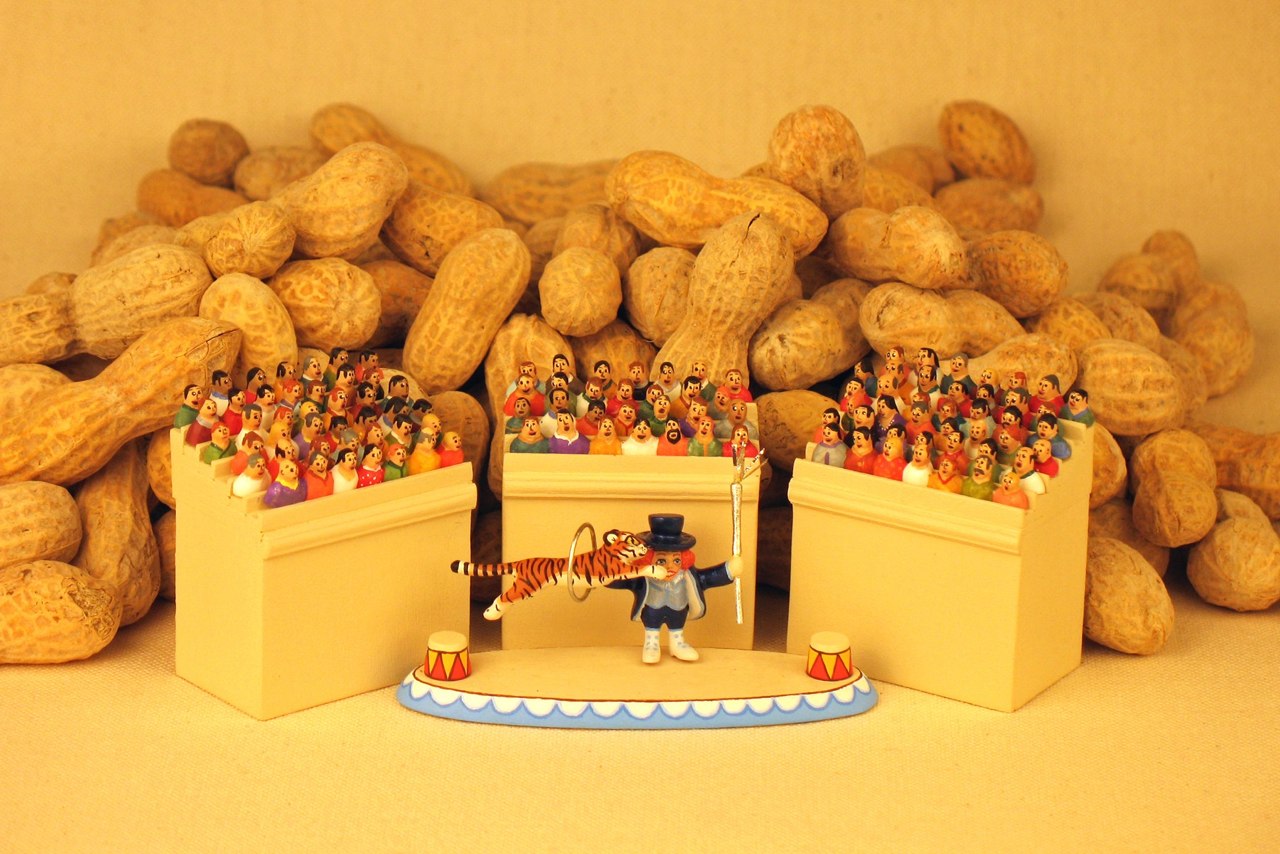Miniatures by Steve Tomashek
| Website | Shop | Blog | YouTube | Twitter |
How did you first get started in woodcarving?
My family always had an affinity towards the arts. As the youngest of seven, I was exposed to a lot of different art forms as a child. Carving was one of them. My father used to carve duck decoys, and I would recreate these in miniature form. As a young boy, I had an interest in war figurines, so I used to carve miniature tanks and airplanes out of wood. Later, I’d make carvings for my Grandma. 
With a burgeoning interest in sculpture and painting, I attended Indiana University where I further developed my woodcarving craft. My passion grew and has remained throughout my life. I was a sculptor and a painter, and I was able to unite my passions with a focus in miniature. At that particular time, I worked in miniature because the materials were more affordable in a smaller size. When your art is small-scale, you don’t need a lot of space and you don’t need as many tools or materials. I used a Swiss Army Knife at that time.
I majored in History, which opened me up to the extensive world of carving and the history of woodcarving across cultures. Many cultures are inspired by the animal form in art and nearly every major artist has also studied animal forms – Franz Marc, for one.
What materials did you use for your first carvings?
As a child, my father and I mostly carved out of basswood. We had two basswood trees in our front yard, but would pick up carving-ready wood (cut and dried) from local lumberyards.
Describe your creative process.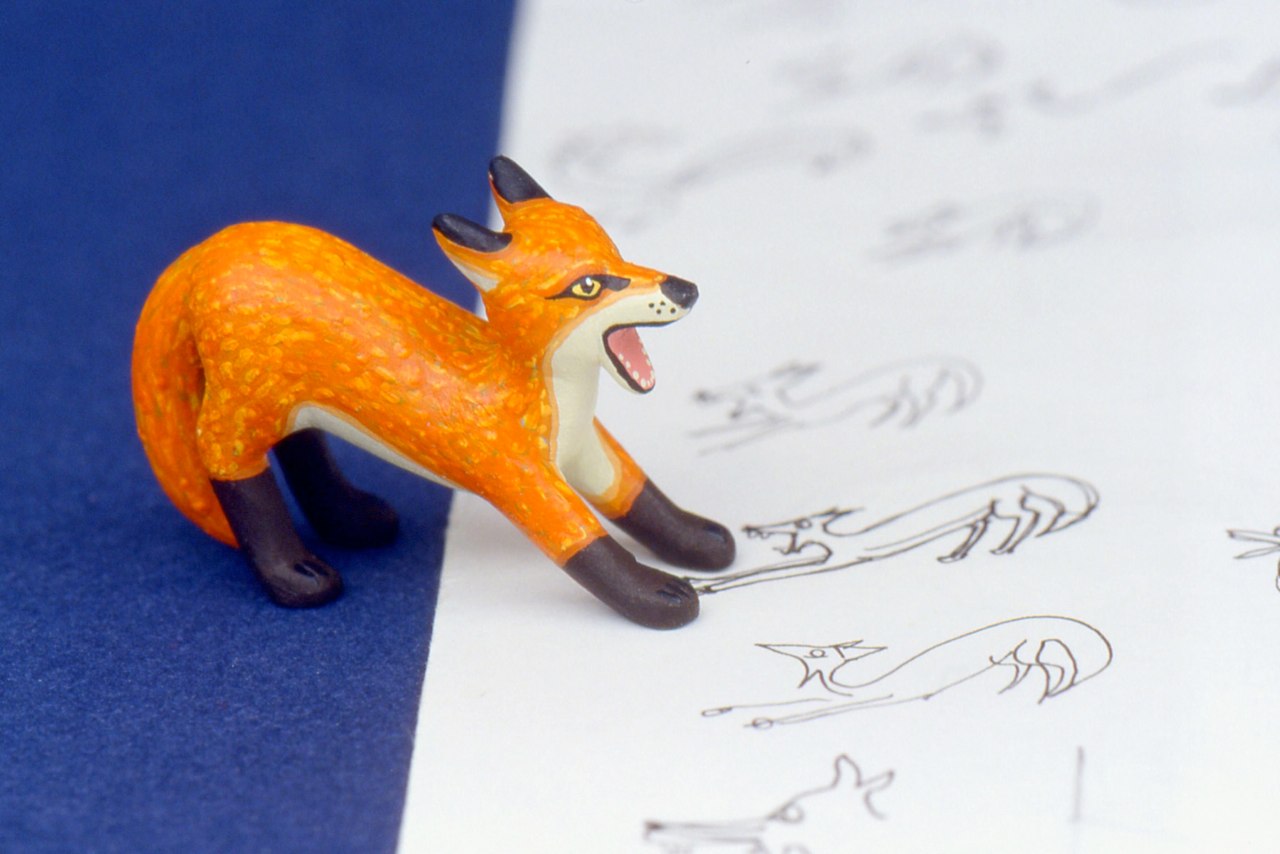
I always sketch out my work before I begin to carve a piece of wood. I’m constantly sketching in a drawing book which helps with my creative vision for a piece. Even if I’m designing something from scratch, I also draw up a sketch first.
I frequently receive international orders from different kinds of collectors who still provide me with the artist freedom to put my own spin on a commission. One collector in particular has amassed nearly 100 of my works over 15 years or so, and she may advise a preferred size of a carving, but allows me to determine the color palette or style. I’m working on a set of chicks at the moment to complement a collector’s recently purchased chicken miniature; for this piece, I’ll be able to run with the color and style.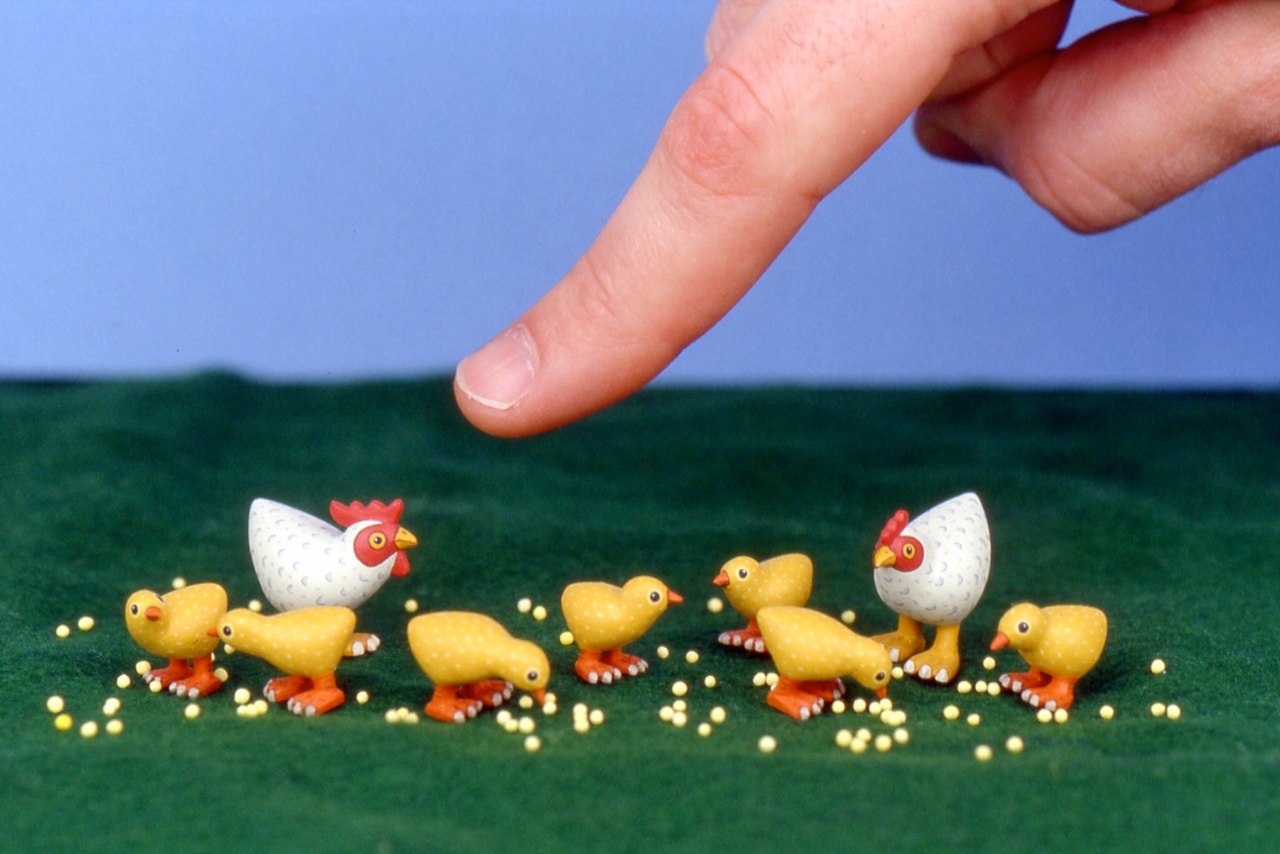
How has your work evolved?
I’ve become more deft at executing miniatures, so the amount of time it takes has been greatly reduced. Whenever I used to miscarve work in my earlier years, I would seamlessly turn the wood into something else. I miss that. Nowadays, I don’t make errors anymore.
For the past 20 years, I’ve been carving wood. Just recently, I have finally begun work on larger-scale sculptures and miniature scenes in boxes. One of my favorites is of a coral reef with fish swimming. My plan is to continue these into the future.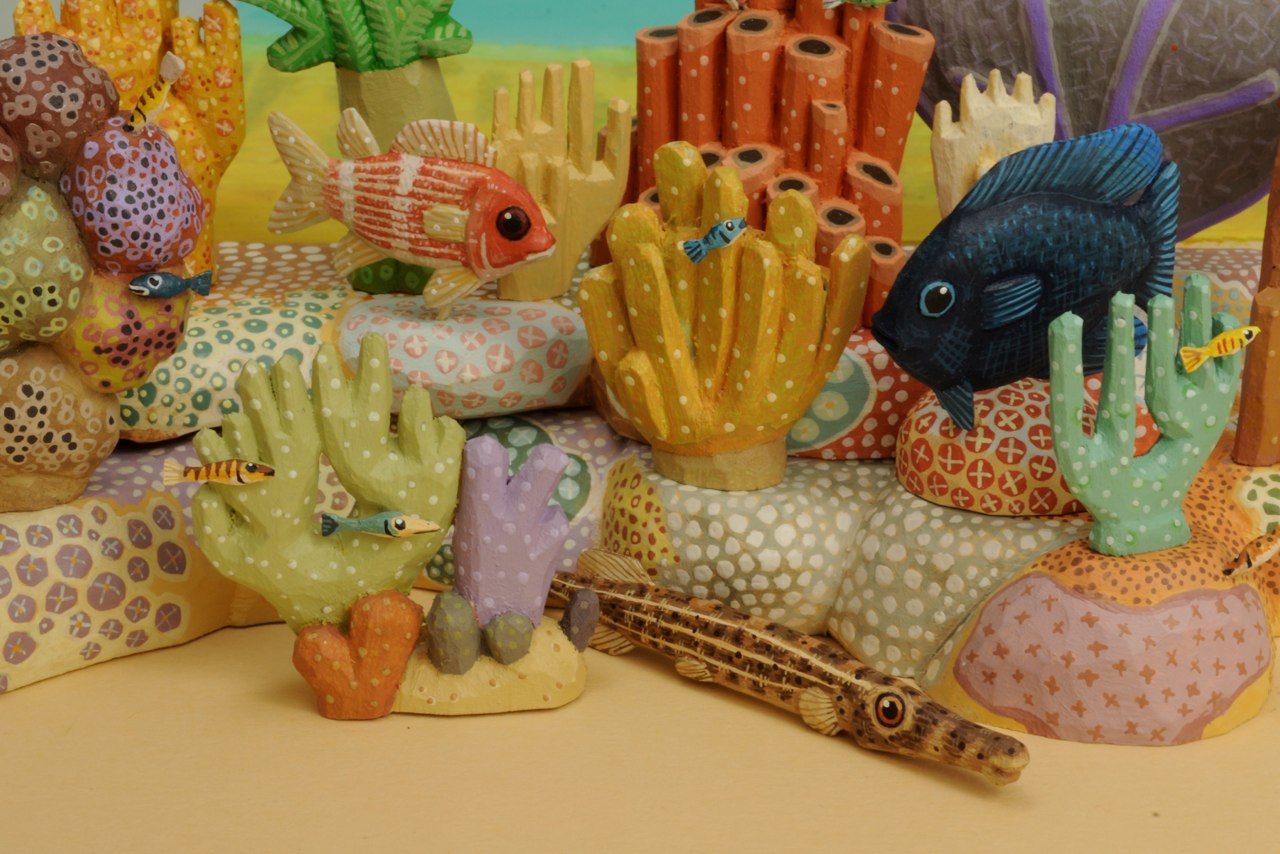
Tool or technique you can’t live without?
These days, I work with the best knives for wood. When at school in Indianapolis, I attended a woodcarving show and there met a Lyons knife maker there who I still continue to use today.
Carving is relatively easy. There are three different types of woodcarving cuts: pull cut, push cut, and a stop cut. I’d highly recommend reading The Big Book of Whittling and Woodcarving Paperback by E. J. Tangerman. Chances are, you can check out this book at your local library. And, it’s likely the book hasn’t been taken out in the past year!
Non-mini artists, designers, books you look to for inspiration?
 Two traditions close to my heart are Zuni fetishes and Oaxacan wood carvings. The Zuni animal fetishes are roughly the same size as my works (ranging in approximately 1-2 inches) and these are made out of semi-precious stones. Some Zuni works are abstracted forms. As for the Oaxacan wood carvings, these are a tabletop size and characterized by a free palette. These artists’ creations range from the more crude to the truly magnificent. I’ve sort of married these two traditions, Zuni and Oaxacan, to create my own style. I’ve allowed myself to use a free palette and range of colors when painting.
Two traditions close to my heart are Zuni fetishes and Oaxacan wood carvings. The Zuni animal fetishes are roughly the same size as my works (ranging in approximately 1-2 inches) and these are made out of semi-precious stones. Some Zuni works are abstracted forms. As for the Oaxacan wood carvings, these are a tabletop size and characterized by a free palette. These artists’ creations range from the more crude to the truly magnificent. I’ve sort of married these two traditions, Zuni and Oaxacan, to create my own style. I’ve allowed myself to use a free palette and range of colors when painting.
Miniaturists that inspire you?
Netsuke, 17th century Japanese miniature sculptures. They took the carving craft to a new, polished level and truly perfected that form.
Are you a collector of miniatures yourself?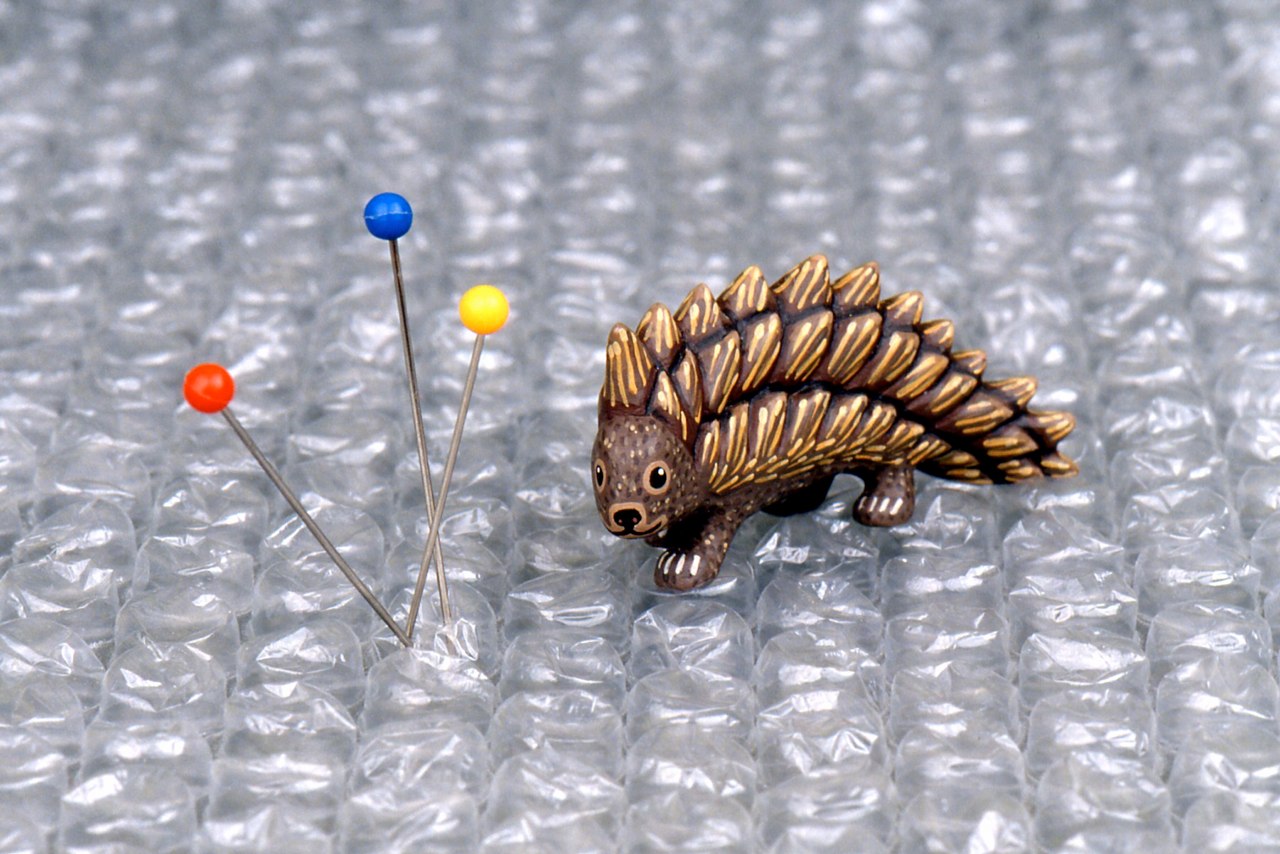
Artists are the biggest collectors of their own work. I learned this at an early age, when my room was filled with paintings by my brother and father. It’s convenient to collect and keep my own carvings since they do not take up much space at all! Occasionally I will share miniatures with friends as a gift, or will trade with other artisans.
Why woodcarving? What appeals to you most about what you do?
I am a sculptor and painter because there are things I want to say that there aren’t words for. The very act of carving wood is now something that I need. When I don’t carve, I feel that something is lacking from my day to day. Woodcarving is both my meditation and my medication. My mind enters a different zone and I can tune out the rest of the world when I’m working on a piece. I use magnification on my pieces, so the act of carving truly blocks out everything else but the microcosm I’m working on.
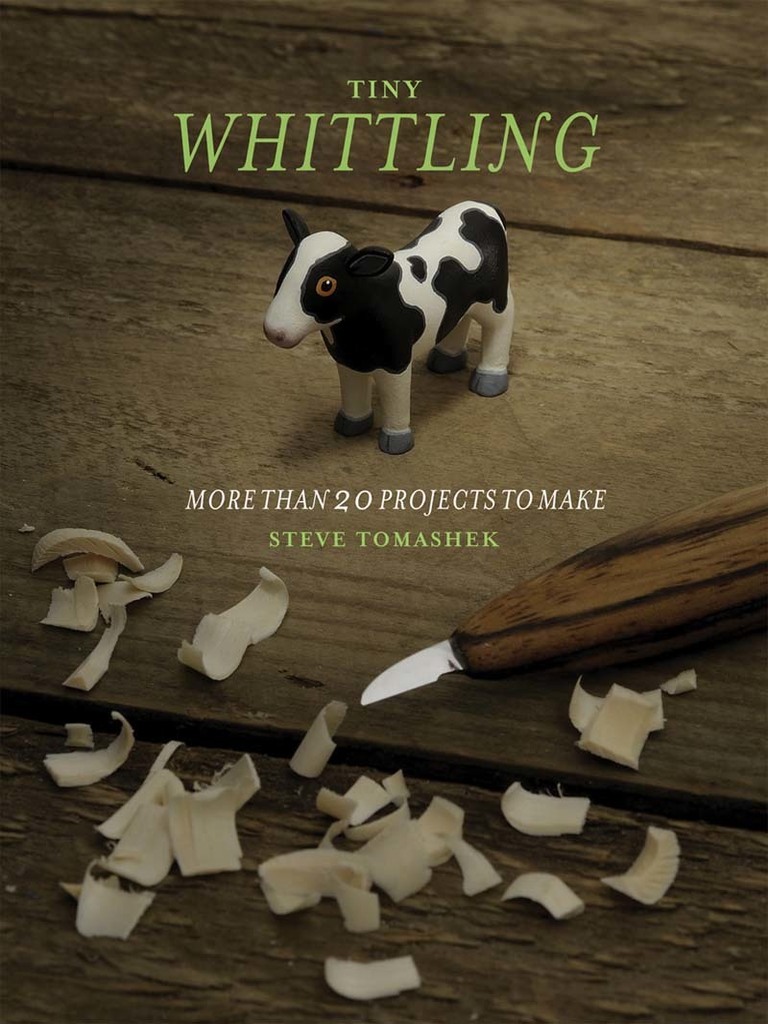 Carving every day provides a rhythm to my life. Previously, I would carve for 12-16 hours at a time and then crash. I have found a better balance today where I can divide my time between other projects. I enjoy writing, working on projects in the garden, and spending time with my wife and animals. I work on blog posts quite often, and have been steadily making progress on a second book. This book will speak to the intersection of art and craft.
Carving every day provides a rhythm to my life. Previously, I would carve for 12-16 hours at a time and then crash. I have found a better balance today where I can divide my time between other projects. I enjoy writing, working on projects in the garden, and spending time with my wife and animals. I work on blog posts quite often, and have been steadily making progress on a second book. This book will speak to the intersection of art and craft.
Most beloved miniature you’ve created?
I still have a chess set I carved for myself in college. And I particularly love the Peanut Gallery carving I made a few years ago—I keep it here in my studio.
What’s to come from Steve Tomashek?
I’m excited to move into my new woodcarving and art studio! There I’ll begin work on more large- and medium-scale pieces. I’ve worked in so many small studio spaces over the years, that it will be nice to have more room for my craft. Stay tuned for more on chainsaw carving!
Steve Tomashek lives in Germany, but is coming to the U.S. this summer to exhibit his miniature woodcarvings. For more on Steve’s colorful and whimsical menagerie, visit his website, shop the store, check out his blog, enjoy woodcarving videos on YouTube, or follow along on Twitter.
Photos taken in collaboration with Glenn Gordon.
